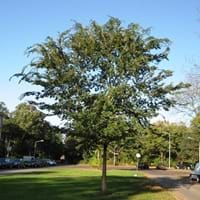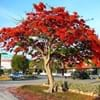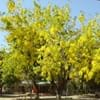Life Span
Perennial
Perennial
Type
Tree
Bulb or Corm or Tuber
Origin
Eastern Asia
South America
Types
Ulmus chumlia, Ulmus glabra, Ulmus elongata
Pamianthe cardenasii , Pamianthe parviflora , Pamianthe peruviana
Number of Varieties
Not Available
Habitat
River side
All sorts of environments
USDA Hardiness Zone
5-9
8-10
Sunset Zone
3a, 3b, 4, 5, 6, 7, 8, 9, 10, 11, 12, 13, 14, 15, 16, 17, 18, 19, 20, 21, 22, 23, 24
21,22
Habit
Upright/Erect
Clump-Forming
Flower Color Modifier
Bicolor
Bicolor
Fruit Color
Tan, Brown
Green
Leaf Color in Spring
Green
Dark Green
Leaf Color in Summer
Dark Green
Light Green
Leaf Color in Fall
Yellow, Red, Green
Several shades of Green
Leaf Color in Winter
Not Available
Light Green
Leaf Shape
Toothed
Strap shaped
Plant Season
Spring, Summer, Fall, Winter
Spring, Summer, Fall
Sunlight
Full Sun, Partial Sun
Partial Sun, Partial shade
Growth Rate
Not Available
Fast
Type of Soil
Loam, Sand
Loam, Sand
The pH of Soil
Acidic, Neutral, Alkaline
Acidic, Neutral, Alkaline
Soil Drainage
Well drained
Average
Bloom Time
Fall
Spring, Late Spring, Early Summer, Summer, Late Summer
Tolerances
Drought
Drought
Where to Plant?
Ground
Ground, Pot
How to Plant?
Seedlings, Stem Planting, Transplanting
Offsets
Plant Maintenance
Medium
Medium
Watering Requirements
Average Water Needs, Requires watering in the growing season, Water when top layer of soil becomes dry
Keep the ground moist but not water-logged
In Summer
Lots of watering
Lots of watering
In Spring
Moderate
Moderate
In Winter
Average Water
Average Water
Soil pH
Acidic, Neutral, Alkaline
Acidic, Neutral, Alkaline
Soil Type
Loam, Sand
Loam, Sand
Soil Drainage Capacity
Well drained
Average
Sun Exposure
Full Sun, Partial Sun
Partial Sun, Partial shade
Pruning
Prune if you want to improve plant shape, Remove damaged leaves, Remove dead leaves, Remove shoots
Pinch or prune as they grow to promote branching and bushiness, Remove damaged leaves, Remove dead branches, Remove dead leaves, Requires little pruning
Fertilizers
organic fertlizers
All-Purpose Liquid Fertilizer, High phosphorus
Pests and Diseases
Mealybugs, Red blotch, Scale
Leaf spot, Mosaic viruses
Plant Tolerance
Drought
Drought
Flowers
Insignificant
Showy
Flower Petal Number
Single
Single
Foliage Texture
Fine
Coarse
Foliage Sheen
Glossy
Glossy
Attracts
Not Available
Bees, Birds, Bumblebees, Butterflies, Hummingbirds, pollinators
Allergy
allergic reaction
Unknown
Aesthetic Uses
Bonsai, Landscape Designing
Beautification, Bouquets, Ornamental use, Showy Purposes
Beauty Benefits
Not Available
No Beauty Benefits
Environmental Uses
Air purification, Food for birds, Food for insects, No fertilizer, pesticides, or herbicides needed, Prevent Soil Erosion
Air purification
Medicinal Uses
Antidote, Demulcent, Diuretic
No Medicinal Use
Part of Plant Used
Fruits, Inner Bark, Leaves
Not Available
Other Uses
Used as firewood, Used for its medicinal properties, Used in construction, Used in Furniture, Wood is used for making furniture, Wood is used for ship building, Wood is used in construction
Beneficial species for attracting pollinators, Decoration Purposes
Used As Indoor Plant
Yes
No
Used As Outdoor Plant
Yes
Yes
Garden Design
Container, Feature Plant, Mixed Border, Shade Trees, Street Trees, Topiary / Bonsai / Espalier
Bog Garden, Container, Feature Plant, Foundation, Mixed Border, Water Gardens
Botanical Name
ULMUS parvifolia 'Drake'
HYMENOCALLIS longipetala
Common Name
Chinese Elm, Drake Elm
Peruvian Daffodil, Spiderlily
In Hindi
चीनी एल्म
peruvian daffodil
In German
Chinese Elm
peruvian daffodil
In French
Elm chinoise
peruvian daffodil
In Spanish
olmo chino
Pamianthe
In Greek
Κινέζοι Elm
peruvian daffodil
In Portuguese
Elm chinês
peruvian daffodil
In Polish
Chiński Elm
peruvian daffodil
In Latin
Chinese Elm
peruvian daffodil
Phylum
Magnoliophyta
Magnoliophyta
Class
Magnoliopsida
Liliopsida
Order
Rosales
Asparagales
Family
Ulmaceae
Amaryllidaceae
Clade
Angiosperms, Asterids, Eudicots
Angiosperms, Monocots
Subfamily
Not Available
Amaryllidoideae
Number of Species
Not Available
Not Available
Season and Care of Chinese Elm and Peruvian Daffodil
Season and care of Chinese Elm and Peruvian Daffodil is important to know. While considering everything about Chinese Elm and Peruvian Daffodil Care, growing season is an essential factor. Chinese Elm season is Spring, Summer, Fall and Winter and Peruvian Daffodil season is Spring, Summer, Fall and Winter. The type of soil for Chinese Elm is Loam, Sand and for Peruvian Daffodil is Loam, Sand while the PH of soil for Chinese Elm is Acidic, Neutral, Alkaline and for Peruvian Daffodil is Acidic, Neutral, Alkaline.
Chinese Elm and Peruvian Daffodil Physical Information
Chinese Elm and Peruvian Daffodil physical information is very important for comparison. Chinese Elm height is 1,520.00 cm and width 1,220.00 cm whereas Peruvian Daffodil height is 61.00 cm and width 61.00 cm. The color specification of Chinese Elm and Peruvian Daffodil are as follows:
Chinese Elm flower color: Red
Chinese Elm leaf color: Green
Peruvian Daffodil flower color: White
- Peruvian Daffodil leaf color: Dark Green
Care of Chinese Elm and Peruvian Daffodil
Care of Chinese Elm and Peruvian Daffodil include pruning, fertilizers, watering etc. Chinese Elm pruning is done Prune if you want to improve plant shape, Remove damaged leaves, Remove dead leaves and Remove shoots and Peruvian Daffodil pruning is done Pinch or prune as they grow to promote branching and bushiness, Remove damaged leaves, Remove dead branches, Remove dead leaves and Requires little pruning. In summer Chinese Elm needs Lots of watering and in winter, it needs Average Water. Whereas, in summer Peruvian Daffodil needs Lots of watering and in winter, it needs Average Water.





